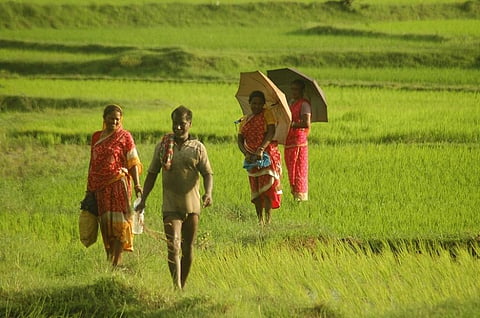

Cropland area across the world increased 9 per cent and cropland net primary production (NPP) by 25 per cent from 2003-2019, according to a new study.
The growth was primarily due to agricultural expansion in Africa and South America, the paper published in Nature Food.
But 49 per cent of the new cropland area replaced natural vegetation and tree covers, indicating a conflict with the sustainability goal of protecting terrestrial ecosystems. In 2019, the cropland area was 1,244 million hectares (mha).
The largest cropland expansion (34 per cent) was observed in Africa. The largest proportions of natural vegetation conversion to croplands (excluding dryland irrigation) were found in Africa (79 per cent of all gross cropland gain area), southeast Asia (61 per cent) and South America (39 per cent), found the study.
In Africa, cropland expansion accelerated from 2004-2007 to 2016-2019, with a more than two-fold increase in annual expansion rates.
The report defined cropland as ‘land used for annual and perennial herbaceous crops for human consumption, forage (including hay) and biofuel’. Perennial woody crops, permanent pastures and shifting cultivation are excluded from the definition.
The analysis was performed in four parts during 2000-2003, 2004-2007, 2008-2011, 2012-2015 and 2016-2019.
Global per capita cropland area decreased 10 per cent during the period due to population growth, according to the report. But the per capita annual cropland NPP increased by 3.5 per cent as a result of intensified agricultural land use.
The global population increased by 21 per cent from 6.4-7.7 billion, from 2003-2019. Global per capita cropland area, as a result, decreased by 10 per cent to 0.16 ha per person in 2019 from 0.18 ha per person in 2003.
Changes in total and per capita mapped cropland area from 2003 to 2019 demonstrate the variability of national responses to the need for increased food production to feed a growing population.
In many African nations such as Cameroon, Chad, Tanzania and Uganda, the relatively large cropland area increases compensated for population growth and resulted in small changes in per capita cropland area.
Per capita cropland area decreased almost two-fold in Niger, which experienced high population growth and slow cropland expansion.
Cropland expansion is a major factor in forest loss, which comes in conflict with United Nations’ Sustainable Development Goal 15 (SDG 15) that aims to stop deforestation and degradation of natural habitats.